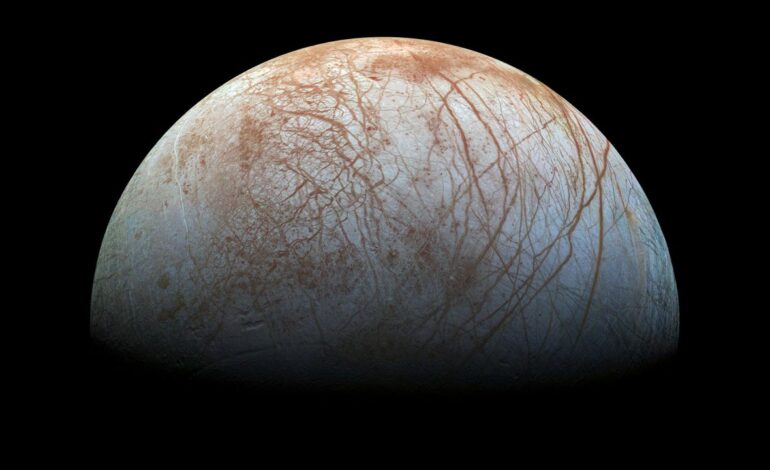Researchers Unveil Laser Drill for Exploring Icy Moons

Scientists have introduced a groundbreaking laser drill designed to explore the icy surfaces of celestial bodies, particularly moons such as Jupiter’s Europa and Saturn’s Enceladus. This innovative approach addresses one of the significant challenges in planetary exploration: drilling through thick ice crusts to access subsurface oceans and gather vital scientific data. Researchers from the Institute of Aerospace Engineering at Technische Universität Dresden in Germany have developed a laser-based solution that promises to enhance our understanding of these distant worlds.
Innovative Design Overcomes Traditional Limitations
Traditional methods of ice exploration, such as mechanical drills and melting probes, often face limitations due to their heavy weight and high energy consumption. In contrast, the new laser drill utilizes a concentrated beam to vaporize ice, a process known as sublimation, rather than melting it. Lead author Martin Koßagk explained, “We’ve created a laser drill that enables deep, narrow and energy-efficient access to ice without increasing instrument mass.” This design keeps all components at the surface, avoiding the challenges of mechanical drills that become heavier with depth.
The laser drill operates at approximately 150 watts and maintains a consistent weight of about 9 pounds (4 kilograms), regardless of the drilling depth, whether 10 meters or 10 kilometers. This efficiency allows for rapid penetration into ice, particularly in dusty layers where traditional melting probes struggle. Initial tests revealed promising results, with the prototype successfully drilling through ice samples up to 20 centimeters long under laboratory conditions and achieving depths exceeding 1 meter in field tests conducted in the Alps and Arctic regions.
Potential Applications for Space and Earth
The implications of this technology extend beyond planetary exploration. On icy moons, the laser drill could facilitate high-resolution analysis of ice composition and density, aiding in the study of heat transport and ocean depth. Koßagk emphasized that this tool could enhance models relating to the formation history of these celestial bodies, potentially revealing signs of past or present microbial life.
Furthermore, the laser drill offers applications on Earth. Field tests conducted in collaboration with the Austrian Research Centre for Forests demonstrated its ability to measure snow density without the need to dig pits. When mounted on a drone, the system can collect vital data from hazardous slopes, contributing to avalanche risk assessment.
While the laser drill presents numerous advantages, it is not without limitations. Challenges arise when drilling through stone or dust layers devoid of ice, necessitating alternative boreholes to bypass obstacles. Additionally, when encountering water-filled crevasses, the drill must remove incoming water before continuing its work. Despite these challenges, the potential for discovering new insights into the chemistry of extraterrestrial habitats remains significant.
Next steps for the research team include miniaturizing the system and developing a dust-separation unit, with aspirations for space qualification tests. A compact version of the laser drill could one day accompany landers destined for icy moons, bringing scientists closer to unveiling the mysteries hidden beneath alien surfaces.
The initial findings of this innovative laser drill were published on September 8, 2023, in the journal Acta Astronautica. As researchers push the boundaries of exploration technology, the quest to understand our solar system’s icy worlds is set to advance significantly.






